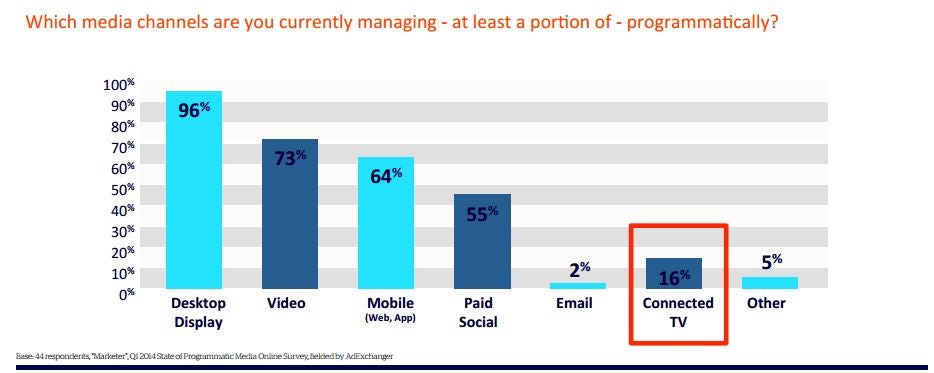Some investors have heard of “programmatic advertising” as the future of the television advertising business, but many don’t know what the term means and how it could change the world of advertising.
Here’s a breakdown of what programmatic ads are and how they work.
What Is Programmatic Advertising?
At the most basic level, programmatic advertising is simply automated, highly-targeted advertising using computer algorithms.
The concept of programmatic advertising has been widely adapted in the digital world, but penetrating the firmly-entrenched traditional TV advertising model has proven to be more difficult.
TV Versus Digital
There are several critical differences between the TV and digital advertising models. Traditionally, TV content has been delivered via broadcast, meaning the best that advertisers could do when it comes to targeting is make generalizations about the “typical” viewer for a particular type of show.
In the digital world, ad impressions are measured in real time by pixels on a screen. User IPs can provide a wide range of data to be fed into publisher and advertiser algorithms to automatically select an ad for a particular user.
On the other hand, the feedback from traditional television advertisements is limited by the technology involved and federal privacy restrictions.
The Future Of Programmatic TV
While it would be difficult for TV advertising auctions to happen in real-time like many online programmatic ad contracts are purchased, the increasing number of connected TVs is opening the door for a new programmatic approach to television advertising for the first time.
According to a 2014 survey, nearly 96 percent of advertisers are handling the online channel programmatically, whereas only 16 percent are currently handling connected TV advertisement programmatically.

As television viewers continue to watch more and more content on connected devices, investors can expect the percent of programmatic TV advertising to continue to grow.
Investors looking to capitalize on the programmatic advertising wave should consider stocks such as TubeMogul Inc TUBE 0.51%, YuMe Inc YUME 0.39% and Temor Video Inc TRMR 1.28%.
Read this article and all my other articles for free on Benzinga by clicking here
Want to learn more about the stock market? Or maybe you just want to be able to look sophisticated in front of your coworkers when they ask you what you are reading on your Kindle, and you’d prefer to tell them “Oh, I’m just reading a book about stock market analysis,” rather than the usual “Oh, I’m just looking at pics of my ex-girlfriend on Facebook.” For these reasons and more, check out my book, Beating Wall Street with Common Sense. I don’t have a degree in finance; I have a degree in neuroscience. You don’t have to predict what stocks will do if you can predict what traders will do and be one step ahead of them. I made a 400% return in the stock market over five years using only basic principles of psychology and common sense. Beating Wall Street with Common Sense is now available on Amazon, and tradingcommonsense.com is always available on your local internet!


